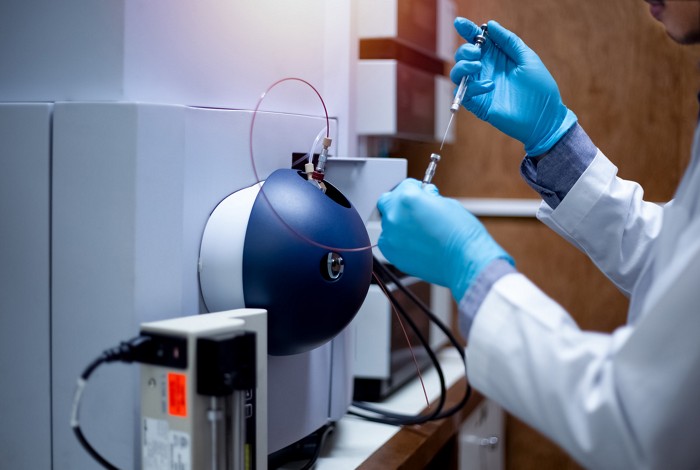Advertisement
Grab your lab coat. Let's get started
Welcome!
Welcome!
Create an account below to get 6 C&EN articles per month, receive newsletters and more - all free.
It seems this is your first time logging in online. Please enter the following information to continue.
As an ACS member you automatically get access to this site. All we need is few more details to create your reading experience.
Not you? Sign in with a different account.
Not you? Sign in with a different account.
ERROR 1
ERROR 1
ERROR 2
ERROR 2
ERROR 2
ERROR 2
ERROR 2
Password and Confirm password must match.
If you have an ACS member number, please enter it here so we can link this account to your membership. (optional)
ERROR 2
ACS values your privacy. By submitting your information, you are gaining access to C&EN and subscribing to our weekly newsletter. We use the information you provide to make your reading experience better, and we will never sell your data to third party members.
Undergraduate Education
Reactions
September 2, 2021
| A version of this story appeared in
Volume 99, Issue 32
Letters to the editor
General chemistry reform

I read with interest the article “Clearing the Way for Reform of General Chemistry Classes” (C&EN, May 24, 2021, page 20), and the letters to the editor related to the article (July 5/12, 2021, page 4), which describe efforts to improve the curriculum and content of the general chemistry courses.
The reference to the K–12 Next Generation Science Standards and performance expectations was good, but I don’t believe that they go far enough in this reform effort. The effort described in the article still has a focus on a content-based model instead of an outcome-based model. Thus, the emphasis is on the content presented in the curriculum and textbook rather than a focus on the specific skills and knowledge to be acquired by the students. Yes, the content is important, but without specification of learning outcomes, the assessment of student learning becomes problematic.
The K–12 standards have provided those teachers with the path to develop learning objectives and outcomes, classroom experiences that provide opportunities to achieve those outcomes, and assessments to measure the acquisition of those skills and knowledge specified by the outcomes. Thus, while K–12 teachers have been moving to the outcome-based model, higher education has not. The importance of specifying learning outcomes lies in the need for students to demonstrate that they have acquired the specified skills and knowledge in each course as they continue to follow a chemistry curriculum. Instructors in the following courses should know what students have learned in the prerequisite courses, as shown in the learning outcomes of those earlier courses. The reforms described in the paper do not appear to include an outcome-based model.
The K–12 standards provide the criteria for specification of skills and knowledge within learning objectives and outcomes by teachers. However, such criteria for undergraduate education exist only for certain areas by accreditation agencies, such as the Accreditation Board for Engineering and Technology (ABET). An example is provided in an article by my colleagues and me (“Student Learning and the Continuous Program Improvement Process in a Chemical Engineering Program,” Proceedings of the ASEE Annual Conference, June 2011, Vancouver). Perhaps the American Chemical Society should consider developing a similar process with appropriate criteria for chemical educators.
Howard Kimmel
East Brunswick, New Jersey
Economics of glass sorting
The front page of the Aug. 2 issue (page 22) of C&EN caught my eye, as I worked in the early ’80s with sorters in the mineral processing industry. A guiding principle was when tons sorted was high, the machines would pay for themselves. To get more tons per meter of belt width, we had to process large particles. The first sorters we sold had 17 air valves across a 1 m sorting area. This arrangement would allow us to economically sort particles down to a 0.5 in (12.7 mm) particle. The next generation had 28 valves and allowed the economical treatment to go to 0.25 in (6.35 mm). Below this particle size, the economics were not there. The exception was for the treatment of diamonds, where value outweighed the small throughput. Additionally, the ratio of the largest particle to the smallest particle to be treated in a single pass was 3:1. The particles have to be spaced for each other to avoid appearing to the sorter as a single particle.

With this in mind, I am puzzled how the treatment of material less than 1.7 mm (10 US mesh top size for most glass furnaces) can be separated economically. One would need many units, or campaign various sizes at separate times to treat the mixed-sized feed. Sizing would have to take place at 1,700 µm, 600 µm (30 mesh), and 105 µm (150 mesh) to keep the 3:1 rule. Below 105 µm you are just blowing dust, which the glass furnaces do not want.
One could size the feed at larger sizes, up to coarse broken bottles with a top size of 2 in (50.8 mm) to increase the throughput, but then the particles would likely lock together and appear to be mixed to the sorter sensor.
To me, it is a good idea but not economical when treating the particle sizes in mixed cullet.
Edwin H. Bentzen III
Arvada, Colorado.





Join the conversation
Contact the reporter
Submit a Letter to the Editor for publication
Engage with us on Twitter